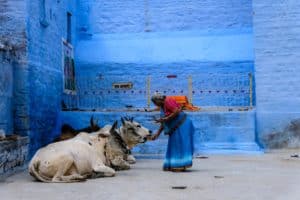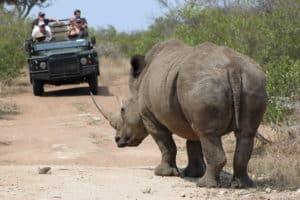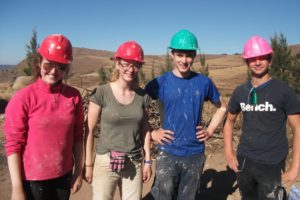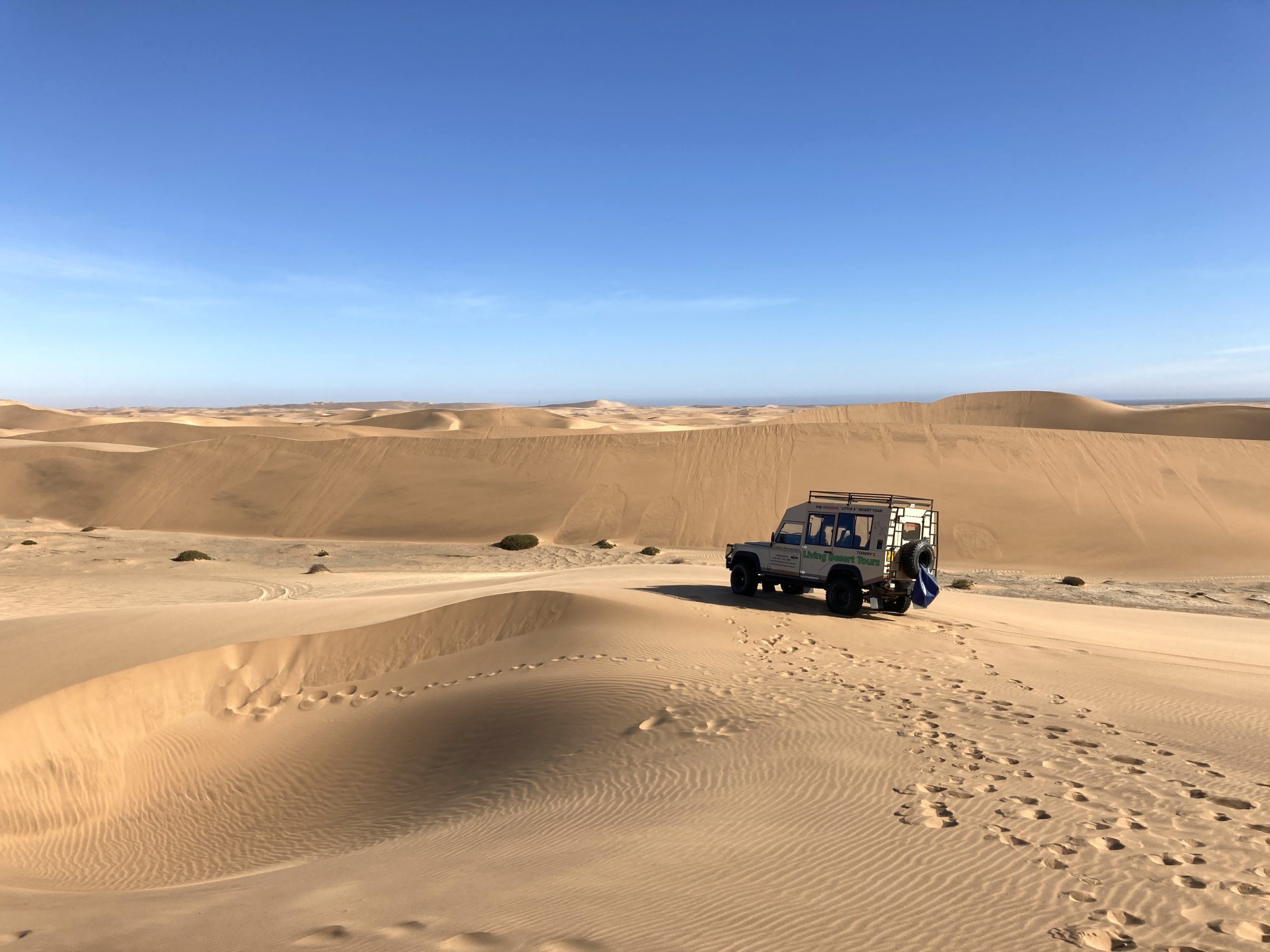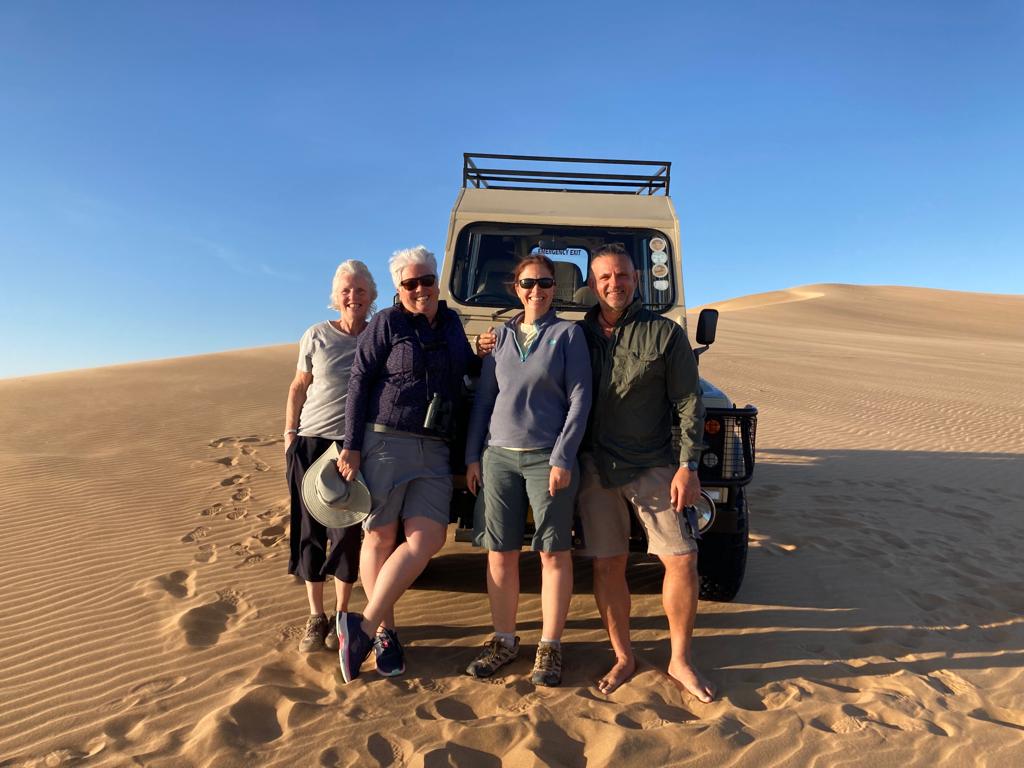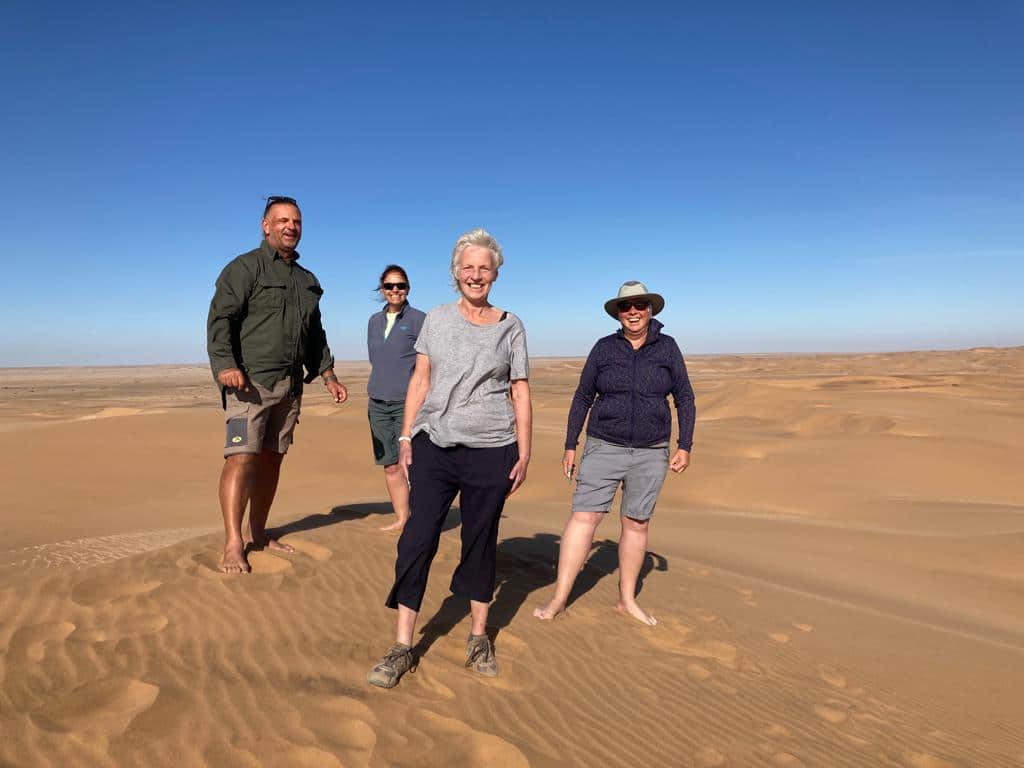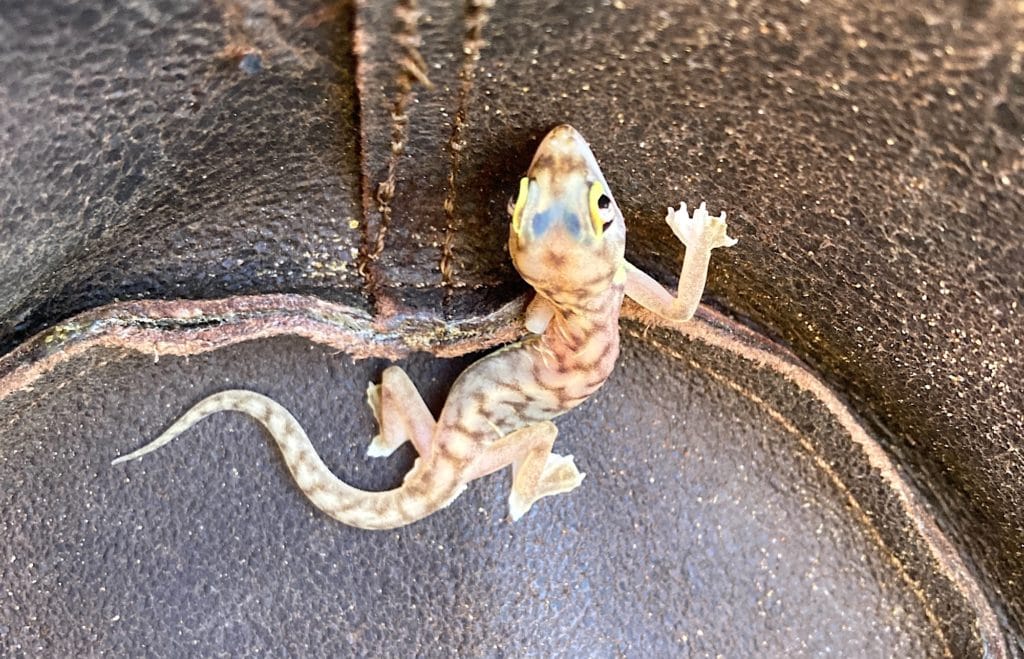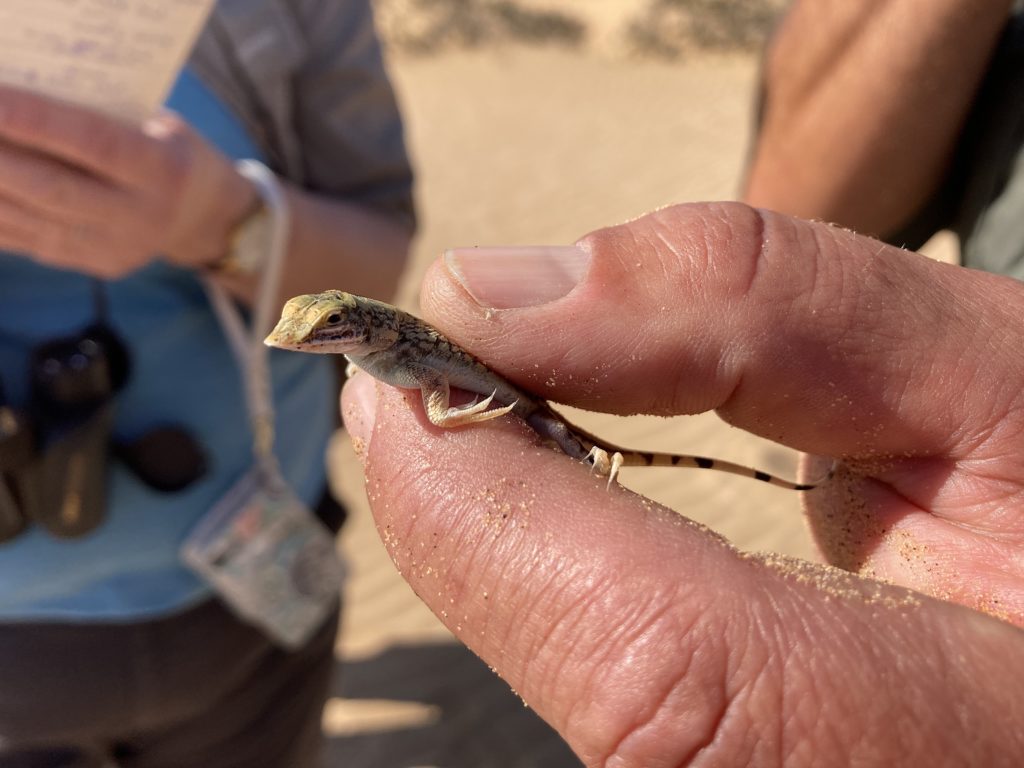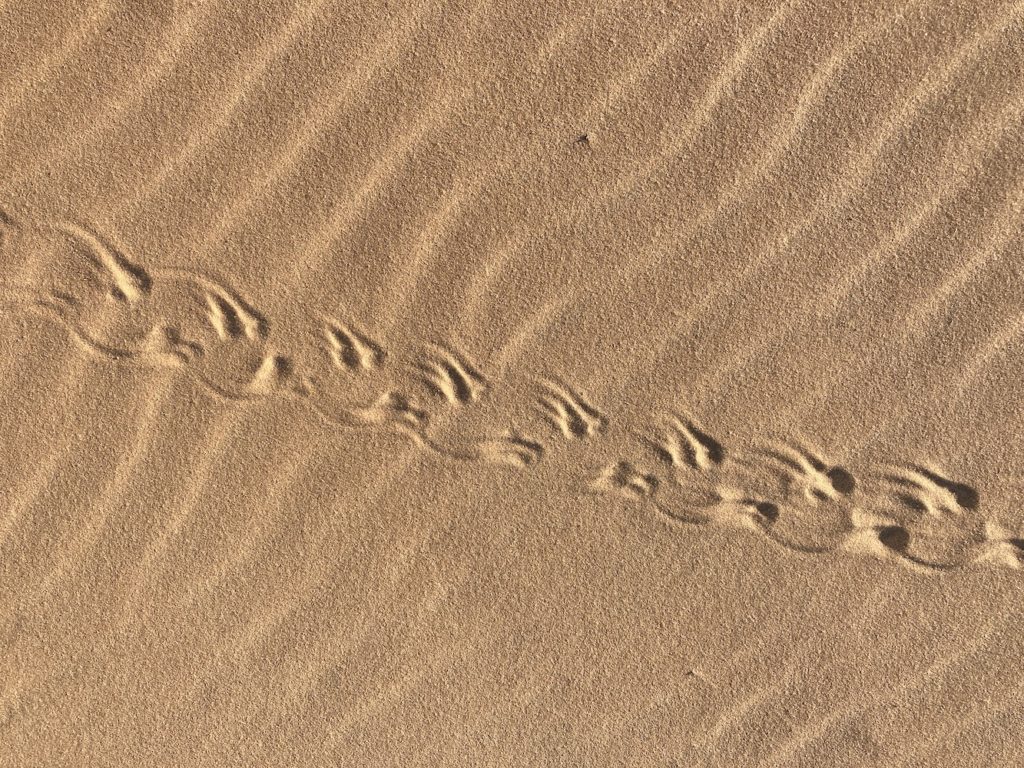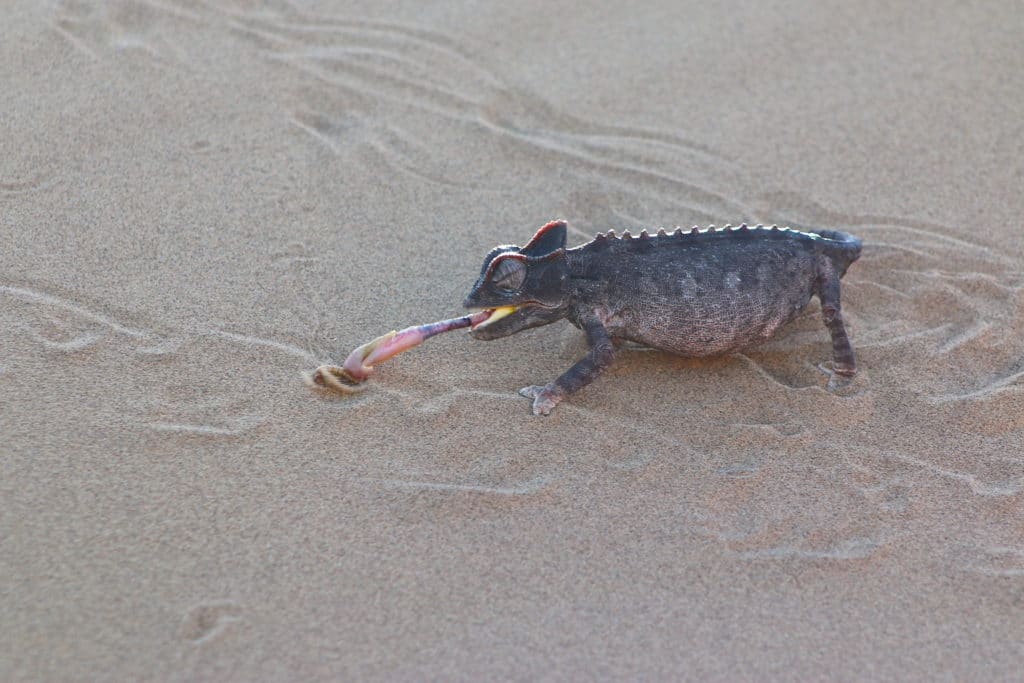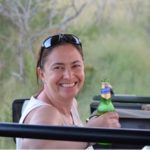A trip into the desert in Namibia to see the smaller things is an absolute must. Instead of looking out for the larger and more obvious wildlife such as oryx, lion and the endless view of sand dunes, there is a plethora of smaller funky animals that are being overlooked. Take a closer look at the sand, and you may see unexpected life.
The Living Desert – Unexpected Life
On our last trip to Namibia, I took The Living Desert tour with our guests. It was exceptional, and we all learnt so much about unexpected life in the dunes. For many it was the best day of their holiday.
We were picked up outside our hotel and whisked off into the desert. Our guide, Johannes, was barefoot and it was obvious that he was passionate about the desert. The knowledge he imparted was incredible. After a quick briefing about what we might see – lizards, snakes, birds and beetles, we began to look at the ground and work out which track was whose. To really immerse ourselves in the experience we all took off our shoes and revelled in the feel of sand between our toes. Luckily the sand was not too hot to walk on!
Small and Unexpected Life
First stop was only 300m out of Swakopmund, on the dunes just over the river. Here, amongst the money bushes, so called as when the round leaves are squeezed they release life giving water, we spotted our first beetle. This was the crunchy beetle. It gets its name from how crunchy it is when eaten! It was very small. No longer were we looking up, we all had our heads down asking about the tracks and who had made them. There were lizard tracks, beetles, birds and also funny little dots, looking as if the sand had been kissed. These had been made by miniature tumble weeds, being blown over the sand by the sea breeze.
We watched a tok tokkie beetle, purposely walk across the sand leaving a very distinctive tractor like trail. These beetles have perfectly adapted the desert by their behaviour. Each morning, they make their way onto the side of a sand dune, and position themselves so that their behinds are in the air and their head is facing down towards the dune. They then wait for the morning fog to condense on their hard carapace, form a drop of water and then drink that as it dribbles down their back. Ingenious!
As we walked around a Tractrac, a desert bird, came to visit, following us in the hope that we might unearth something. He fluttered around the money bushes, following us as we explored bare footed.
The Palmato Gecko
As we were walking around Johannes suddenly exclaimed that he had found it. We were not too sure what it was he had found but he was very excited about it. There was a faint mark on the ground which Johannes had put there yesterday. It was to indicate an area for a specific lizard. Johannes suddenly started digging in the sand and we all curiously crowded around to watch. There was a movement and Johannes adeptly caught something and put it into his hat. We peered inside.
It was a delightful looking lizard, translucent in colour with huge eyes looking up at us. It was a palmato gecko. Johannes made sure that he was always in the shade, as they are very sensitive to the sun. We looked on in awe. It was a ‘he’ – Johannes told us he could tell by the tiny marks at the start of its tail. He looked right at us. This was the lizard that licks its eyeballs to clear them from sand. Very cute.
We spent a while marvelling at him and then Johannes said it was time to return him to his home. Johannes told us that if the gecko did not bury itself when it was placed on the ground, that he would keep it with him and return it back to the desert that night. To make life easier for the palmato gecko, Johannes poured some water at the top of a small sand bank, scooped some sand away below and then popped our friend on the ground near it. He immediately buried into the sand, escaping the harsh sun and finding relative safety.
Hunting for the Small Things – Unexpected Life
It was then time to get into the vehicle, and to travel deeper into the desert looking for more smaller animals to observe. We travelled slowly, keeping an eye out for anything unexpected life. Johannes was exceptional at spotting things and once our eyes were in tune with searching for hidden gems, so were we.
A flask of movement and a lizard was spotted dancing across the hot sand. Johannes was out in a flash, leaving us open mouthed in the vehicle. He approached the lizard from the side and with one smooth swipe he caught a shovel-snouted lizard. Up close you could see its stumpy snout and beautiful scales and also appreciate how it had adapted to desert living. This particular lizard is also known as the Ferrari lizard. It lived up to its name – he was a bit of a speedy Gonzales!
Tracks in the Sands
We drove further into the desert, and it really felt as if we were the only ones there. The dunes seem to go on forever and it genuinely felt as if we were the only ones for miles around. We were gloriously scared as Johannes drove us up and down impossibly navigable sand dunes, a natural roller coaster ride in the wild. Stopping at view points gave us the chance to lift our heads up and marvel at the scenery. We had all been hooked on looking for snake tracks, or the flamboyant tracks of other rare creatures.
Lady luck was with us that day. On one of our dune rides we crossed some distinct tracks and Johannes leapt out in delight. It was chameleon tracks, and we were going to follow them! We didn’t have to go far, in fact we only walked 10m and there it was, wandering across the barren sand. This was a Namaqua chameleon. It was traversing to a small bush where it was probably going to spend the night.
A Cocky Chameleon
It had that typical jaunty walk, as if on a tight rope, eyes moving in different directions whilst checking out its environment. Its tail was curled up at the end and it changed colour as it altered its alignment with the sun. It was fascinating to watch. It moved surprisingly quickly across the sand in search of food and Johannes had some meal worms so we could see it feed. We could see how it focussed on its food, halted and then bam! A sticky tongue shot out and the meal worm was history. I could have spent hours watching this lizard go about its business in the secret of the dunes.
When on safari, make sure you take time to appreciate the smaller animals. You never know what unexpected life you may find. I thoroughly recommend the Living Desert Tour in Swakopmund, Namibia. It’s great for all ages, especially a big kid like myself!
